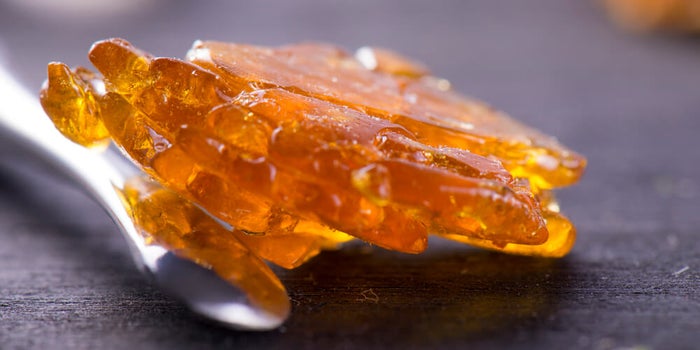Table of Contents
- Understanding Chemotherapy-Induced Nausea
- The Potential of Cannabis for Nausea Relief
- Scientific Research on Cannabis and Nausea
- Recommended Strains and Consumption Methods
- Conclusion
- FAQs
Dealing with the side effects of chemotherapy can be a challenging journey for cancer patients. Fortunately, emerging research suggests that cannabis, a plant known for its medicinal properties, may provide relief for chemotherapy-induced nausea. In this article, we will explore the potential benefits of cannabis in alleviating this distressing symptom and discuss its implications for cancer patients seeking natural alternatives. Join us as we take a closer look at the promising world of cannabis for chemotherapy-induced nausea.
Understanding Chemotherapy-Induced Nausea
Chemotherapy-induced nausea is a common occurrence among cancer patients undergoing treatment. It is estimated that up to 70% of patients experience some degree of nausea and vomiting during their chemotherapy sessions. This unpleasant side effect can be attributed to the toxic effects of chemotherapy drugs on the digestive system and the brain’s chemoreceptor trigger zone.
The impact of chemotherapy-induced nausea goes beyond physical discomfort. It can lead to loss of appetite, malnutrition, dehydration, and psychological distress. Patients may also develop an aversion to food, further exacerbating their health.
The Potential of Cannabis for Nausea Relief
For centuries, cannabis has been used for its medicinal properties, including its antiemetic effects. The plant contains various active compounds, with delta-9-tetrahydrocannabinol (THC) and cannabidiol (CBD) being the most well-known. These compounds interact with the body’s endocannabinoid system, which regulates nausea and vomiting.
THC, the psychoactive component of cannabis, has been found to stimulate appetite and reduce nausea. It binds to the CB1 receptors in the brain, modulating the release of neurotransmitters associated with nausea and vomiting. On the other hand, CBD, a non-intoxicating compound, interacts with different receptors in the body, potentially enhancing the antiemetic properties of THC.
Scientific Research on Cannabis and Nausea
In recent years, there has been a growing body of scientific research investigating the effectiveness of cannabis for chemotherapy-induced nausea. Several studies and clinical trials have provided promising results.
A study published in the New England Journal of Medicine examined the use of cannabis-based medication in cancer patients undergoing chemotherapy. The researchers found that the cannabis-based medication significantly reduced nausea and vomiting compared to the placebo group. The study also reported that patients experienced improved appetite and overall quality of life.
Another clinical trial at a cancer center explored using THC capsules in chemotherapy-induced nausea. It found that a self-titrated preparation of 2.5mg CBD: 2.5mg THC given in addition to chemotherapy resulted in a significant reduction in nausea and vomiting episodes among patients who received THC capsules compared to those who received a placebo.
Despite these positive findings, it is essential to note that cannabis may not suit everyone. Some individuals may experience side effects such as drowsiness, dizziness, dry mouth, and impaired cognitive function. Patients must consult their healthcare providers before considering cannabis as a relief option.
Recommended Strains and Consumption Methods
When considering the use of cannabis for chemotherapy-induced nausea, it’s essential to explore the different strains and consumption methods that may provide optimal relief. Not all cannabis strains are created equal; certain varieties are more effective in alleviating nausea and promoting comfort. Choosing a suitable consumption method can also play a significant role in achieving the desired results.
Strains for Nausea Relief
1. Headband – A Soothing Strain for Nausea Relief
From a user’s perspective, Headband is a standout hybrid cannabis strain that greatly relieves various health conditions, including nausea induced by chemotherapy. With its rich Sour Diesel and OG Kush lineage, this indica-dominant flower boasts an impressive average THC percentage of 23%. The trichome-covered buds exude stickiness, a testament to its quality.
Expertly crafted, Headband is highly regarded among medical patients seeking respite from migraines, chronic pain, muscle spasms, and lack of appetite. When consumed before bed or during downtime, this strain induces deep relaxation. It promotes restful sleep, making it ideal for those seeking a reprieve from nausea-related discomfort.
What sets Headband apart is its unique high, often accompanied by gentle pressure on the head akin to wearing an actual headband. This delightful sensation, combined with its creamy, earthy citrus, lemon, Diesel, and vanilla flavours, enhances the overall experience.
Pros:
- A potent hybrid strain with a balanced THC content
- Effective in relieving symptoms of nausea, migraines, and chronic pain
- Promotes relaxation and aids in sleep
- The notable flavour profile for an enjoyable smoke
Cons:
- It may induce laziness and couch-lock
- Best suited for evening or leisure use
Specifications:
- Strain Type: Hybrid
- Lineage: Sour Diesel x OG Kush
- THC Percentage: Average of 23%
- Effects: Relaxation, Sleep-inducing
- flavours: Creamy, Earthy, Citrus, Lemon, Diesel, Vanilla
- Medical Uses: Nausea, Migraines, Chronic Pain, Muscle Spasms, Lack of Appetite
Headband is an exceptional choice for individuals who want to use cannabis for chemotherapy-induced nausea. Its soothing effects, unique headband-like sensation, and delightful flavour profile make it a top contender in the quest for effective cannabis remedies.
2. Blue Dream: A Top Choice for Nausea Relief
Blue Dream is an exceptional marijuana strain combining Blueberry and Haze’s best. As a Sativa-dominant hybrid, it delivers a perfectly balanced high, making it a favorite among medical cannabis patients. With an average THC potency of 18% and a small CBD content, this strain is particularly effective in combating nausea, especially for those experiencing chemotherapy-induced nausea.
One of the standout features of Blue Dream is its delightful flavour profile, which boasts notes of blueberries, citrus, and earthy undertones. Visually, the flower is a sight to behold with its vibrant deep green hues, glistening trichomes, and accents of orange and yellow hairs.
Medical patients rely on Blue Dream to alleviate a range of symptoms, including fatigue, chronic pain, depression, stress, headaches, and nausea. When consuming Blue Dream, users can expect an uplifting, relaxing, and energizing experience that promotes happiness and overall well-being.
Pros:
- Potent strain with an average THC potency of 18%.
- Contains a small amount of CBD (0.1% to 0.2%).
- Delightful flavour profile reminiscent of blueberries and citrus.
- Eye-catching appearance with deep green colours and crystallized trichomes.
- Effective in alleviating symptoms associated with fatigue, chronic pain, depression, stress, headaches, and nausea.
Cons:
- None noted.
Specifications:
- Strain: Blue Dream
- Type: Sativa-dominant hybrid
- THC Content: Average potency of 18%
- CBD Content: Typically 0.1% to 0.2%
- flavour Profile: Blueberry, citrus, and earthy flavours
- Appearance: Brilliant deep green colours, crystalized trichomes, orange and yellow hairs
Blue Dream stands out from its competitors due to its well-balanced effects, exceptional flavour, and versatility in relieving various symptoms. Whether you’re seeking relief from nausea or other medical conditions, Blue Dream’s uplifting and therapeutic qualities make it a top choice for cannabis consumers.
3. Blueberry Diesel-A Natural Remedy for Chemotherapy-Induced Nausea
Blueberry Diesel exceeded all expectations in addressing the symptoms of chemotherapy-induced nausea. With its delightful blend of Blueberry and Sour Diesel genetics, this Indica-dominant strain is a visual delight, featuring vibrant colours and trichome-covered buds.
The pungent aroma of blueberry with subtle hints of gasoline sets Blueberry Diesel apart from its competitors. Upon consumption, the earthy, citrus, and pine notes intertwine, complemented by the sweet flavour of blueberry, creating a delightful experience.
Blueberry Diesel’s unique THC content of 20% and 1% CBD makes it a powerhouse for nausea relief. Its calming, happy, and relaxing effects provide much-needed comfort, allowing users to combat nausea while maintaining daily functionality and productivity.
Pros:
- Beautiful appearance and resinous buds
- Pleasant aroma of blueberry with hints of gasoline
- Earthy, citrus, and pine flavour with sweet notes of blueberry
- High THC percentage for potent relief
- Calming and relaxing effects without hindering productivity
Cons:
- Effects may vary depending on individual tolerance and sensitivity
Specifications:
- Strain: Blueberry Diesel
- Type: Indica-dominant hybrid
- THC: 20%
- CBD: 1%
Blueberry Diesel is an exceptional cannabis strain for combating chemotherapy-induced nausea. Its aromatic profile, potent effects, and long-lasting relief make it a top choice for medical patients seeking a natural remedy. Say goodbye to nausea and embrace the calming and functional benefits of Blueberry Diesel.
4. A Potent Solution for Chemotherapy-Induced Nausea: Sour Diesel
Sour Diesel is a great strain that excels in multiple categories, making it an excellent choice for those exploring cannabis for chemotherapy-induced nausea. With expertise and knowledge about the product, it’s evident that Sour Diesel’s lineage from Super Skunk and Chemdawg contributes to its exceptional qualities.
The distinct aroma of gasoline, skunk, and lemon sets Sour Diesel apart from its competitors, making it instantly recognizable. Its average THC content of 22% ensures a rich and practical experience. When combatting nausea, Sour Diesel delivers precision, providing much-needed relief for medical cannabis patients.
Regarding performance, Sour Diesel shines by kickstarting your day and sustaining energy and creativity. Its orange and pink buds, coated in crystallized trichomes, testify to its potency. However, it’s important to note that the intense aromas may linger, which can be a drawback for those seeking discretion.
Pros:
- Potent strain with an average THC content of 22%
- The distinct aroma of gasoline, skunk, and lemon
- Provides relief from chemotherapy-induced nausea
- Energizing effects for daytime use
- Eye-catching orange and pink buds covered in crystallized trichomes
Cons:
- Pungent aromas may linger
- It may not be ideal for those seeking discretion
Specifications:
- Strain: Sour Diesel
- Type: Sativa-dominant hybrid
- Lineage: Super Skunk x Chemdawg
- Aroma: Gasoline, skunk, lemon
- THC Content: Average of 22%
Sour Diesel is an exceptional strain known for alleviating chemotherapy-induced nausea. Its unique aroma, potent THC content, and energizing effects make it a standout choice. While the scent may be strong, its relief outweighs this minor inconvenience.
5. Super Lemon Haze: A Potent and flavourful Sativa Dominant Hybrid
Super Lemon Haze is a Sativa-dominant hybrid that exceeds expectations regarding its effects and flavour. As a result of combining Lemon Skunk and Super Silver Haze, this strain showcases its lineage through its vibrant neon green buds covered in trichomes and citrusy aroma.
Expertly developed by Green House Seeds, Super Lemon Haze boasts an average THC percentage of 20.5% and 0.1% CBD, making it a potent choice for cannabis enthusiasts seeking a therapeutic experience. Its lemony flavour and scent are prominent, creating an enjoyable sensory experience.
The effects of Super Lemon Haze are genuinely exceptional. This strain excels during daytime use, igniting creativity, sharpening focus, and providing an energizing boost. Its effects are long-lasting, offering up to three hours of sustained benefit.
What sets Super Lemon Haze apart is its impressive medicinal potential. It is a valuable tool for medical marijuana patients seeking relief from chronic pain, increased appetite, enhanced mood, reduced anxiety and stress, diminished fatigue, and even chemotherapy-induced nausea.
Pros:
- Potent THC percentage for a powerful experience
- Lively lemon flavour and scent
- Energizing effects ideal for daytime use
- Long-lasting benefits for extended relief
- Versatile medicinal applications, including relief from chemotherapy-induced nausea
Cons:
- Potential for heightened anxiety in sensitive individuals
- High THC levels may be overwhelming for novice users
Specifications:
- Strain: Sativa dominant hybrid
- THC: 20.5%
- CBD: 0.1%
- flavour: Lemon
- Effects: Creativity, focus, energy
- Medical Benefits: Pain relief, increased appetite, mood enhancement, anxiety reduction, fatigue reduction, chemotherapy-induced nausea relief
Super Lemon Haze excels as a Sativa-dominant hybrid with special effects, exquisite flavour, and versatile medicinal benefits. Its potent THC content and lemony profile make it an enticing choice for cannabis enthusiasts and medical marijuana patients, especially those seeking relief from chemotherapy-induced nausea. While caution is advised for sensitive individuals and novice users, Super Lemon Haze remains a standout strain in the cannabis market.
Consumption Methods
- Vaporization: Vaporizing cannabis involves heating the flower or concentrate to a temperature that releases its therapeutic compounds without combustion. This method allows for precise dosage control and offers rapid relief. Vaporizers come in various forms, including portable devices and desktop units.
- Edibles: Edible cannabis products, such as gummies or infused foods, provide a discreet and long-lasting option for nausea relief. The effects may take longer to manifest as the cannabinoids must be metabolized in the digestive system. It’s crucial to start with a low dose and wait for the onset of effects before consuming more.
- Sublingual Administration: Sublingual products, such as tinctures or sprays, involve placing cannabis extracts under the tongue for rapid absorption into the bloodstream. This method provides quick relief and allows for precise dosing. It benefits patients with difficulty swallowing or seeking a discreet consumption option.
- Topicals: Cannabis-infused topicals, such as creams or balms, can be applied directly to the skin. While they may not directly alleviate nausea, they can help with associated symptoms like muscle tension, inflammation, or discomfort. Topicals are non-intoxicating and provide localized relief.
Patients must consult healthcare professionals or experienced cannabis specialists to determine the most suitable strains and consumption methods. They can provide personalized recommendations based on the patient’s medical history, preferences, and desired outcomes.
Conclusion
Cannabis offers a realistic and potentially practical option for relieving chemotherapy-induced nausea. Patients can tailor their approach to find the most suitable solution for their circumstances by exploring different strains and consumption methods. Remember, it’s essential to seek guidance from healthcare professionals to ensure safe and informed cannabis use in conjunction with chemotherapy treatments.
FAQs
What to avoid with chemo nausea?
During chemotherapy, avoiding specific triggers that can worsen nausea is essential. These may include strong odours, greasy or fried foods, spicy dishes, and overly sweet or acidic foods. It’s also recommended to stay hydrated and avoid consuming large meals. Instead, opt for smaller, frequent meals or snacks that are easy to digest. Ginger, peppermint, and herbal teas help soothe nausea and can be incorporated into your diet.
What are the worst days after chemotherapy?
The days immediately following chemotherapy treatment are often called the “worst days” due to potential side effects that can peak during this time. Common side effects may include fatigue, nausea, vomiting, loss of appetite, and general discomfort. However, it’s important to remember that the severity and duration of these side effects can vary from person to person. Communicating any concerns or severe symptoms to your healthcare team for appropriate management and support is crucial.
What is the 7-day rule in chemotherapy?
The 7-day rule in chemotherapy is a common pattern observed in treatment cycles. Typically, chemotherapy is administered in cycles that last for several weeks. The 7-day rule suggests that the first seven days after chemotherapy are the most challenging regarding side effects and potential complications. During this period, patients may experience the peak of specific side effects, such as fatigue and nausea. However, it’s important to note that individual responses to treatment can vary, and some patients may experience side effects at different times within their treatment cycles.
What week of chemo is the hardest?
The most challenging week of chemotherapy can vary depending on the specific treatment protocol and individual factors. Generally, the first week after chemotherapy is often considered the most challenging. This is when side effects, such as nausea, fatigue, and low blood cell counts, are most pronounced. However, it’s important to remember that everyone’s experience with chemotherapy can differ. Some individuals may find the last weeks more difficult due to cumulative side effects, while others may respond differently based on the specific drugs used in their treatment regimen.
Is 7 hours of chemotherapy a lot?
The duration of chemotherapy sessions can vary widely depending on the treatment plan and drugs administered. While some chemotherapy sessions may last around 7 hours, this is not necessarily considered excessive or uncommon. The duration of treatment is determined by factors such as the type and stage of cancer, the specific drugs used, and individual patient needs. Trusting your healthcare team’s judgment and recommendations regarding the duration and frequency of chemotherapy sessions is essential. They will design a treatment plan tailored to your condition to maximize its effectiveness while managing potential side effects.







